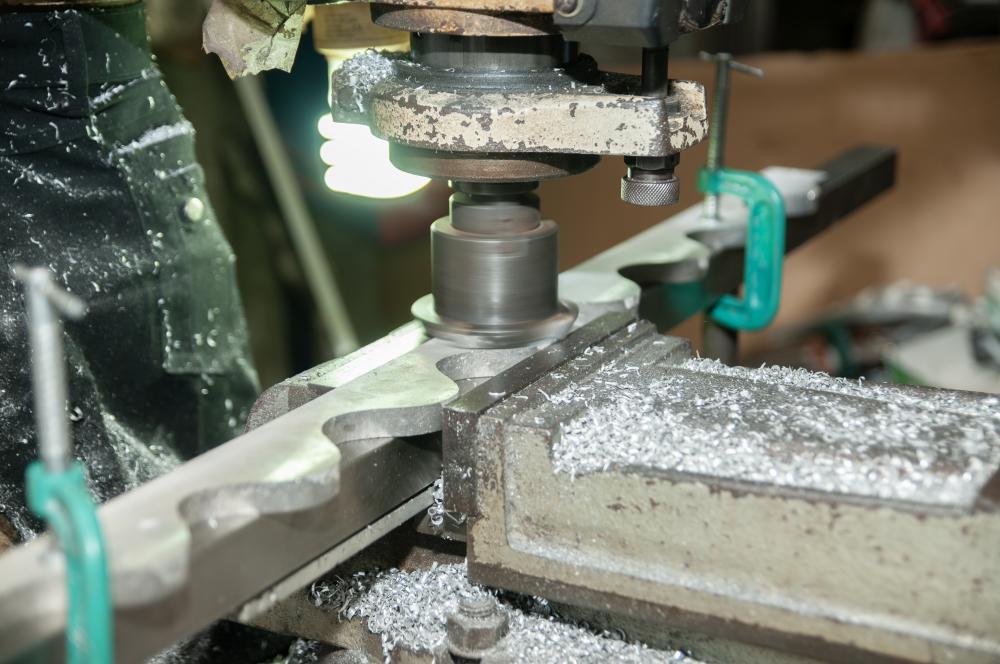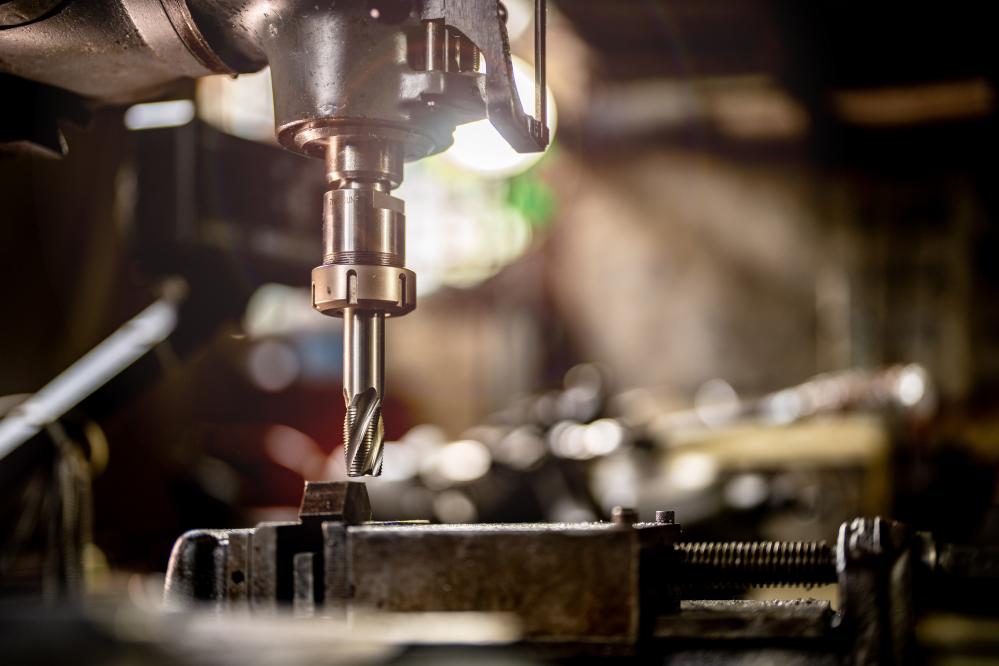
Introduction to Machining Milling
At Anco Precision Inc., we’ve spent over four decades mastering the art of machining milling, a process that stands at the core of the manufacturing sector. It’s a technique that has evolved significantly over the years, transitioning from manual to highly sophisticated CNC (Computer Numerical Control) systems. Here, we aim to share some of our insights, experiences, and the nuances of machining milling that we’ve gathered over the years, catering to a vast array of industries from aerospace to automotive.
Understanding Machining Milling
Machining milling is a process that involves the removal of material from a workpiece by advancing a cutter into it. This process is crucial for creating a variety of features on a part like holes, slots, and even complex surface contours. The flexibility and capability of milling machines, especially CNC milling machines, make them indispensable in modern manufacturing.
Types of Milling Machines
Manual vs. CNC Milling Machines
In the early days at Anco Precision Inc., manual milling machines were the backbone of our production. These machines require the operator to manually control the movement and operations, which while effective for small batches, lacks the efficiency and precision of modern CNC systems. Transitioning to CNC milling machines propelled our capabilities forward, allowing for automation, greater precision, and increased production rates.
Vertical vs. Horizontal Mills
Vertical milling machines, where the spindle axis is vertically oriented, are versatile and commonly used. They are excellent for jobs that require a high level of detail and precision. Horizontal milling machines, on the other hand, possess a horizontally oriented spindle and are ideal for heavy cutting operations. Both types have their place in manufacturing, depending on the specific requirements of the project.
Advantages of CNC Machining
The advent of CNC machining brought a revolution in machining milling, with benefits that we at Anco Precision Inc. celebrate every day. The precision and repeatability of CNC machines are unmatched. They can produce complex shapes and fine details that manual machines could never achieve. The automation of CNC machines also means higher productivity and reduced labor costs, allowing for a more efficient production line.
Choosing the Right Milling Machine
Deciding between a manual or CNC milling machine, or choosing between a vertical and horizontal setup, depends on several factors. These include the complexity of the part, the production volume, and the precision requirements. For hobbyists or small batches, a manual milling machine might suffice. However, for high-volume production with strict quality standards, a CNC milling machine is essential.
Materials and Tooling for Machining Milling
The choice of material and tools is critical in machining milling. The material to be milled determines the type of tooling and the milling parameters. At Anco Precision Inc., we’ve worked with everything from soft plastics to aerospace-grade metals. Understanding the material properties and selecting the right cutting tools is essential for efficient machining and optimal outcomes.
Challenges in Machining Milling
Maintaining Precision
Maintaining the high level of precision required in today’s manufacturing environment is a challenge that we face daily. It involves meticulous planning, precise tooling, and constant monitoring. This attention to detail ensures that every part meets the stringent quality standards of our diverse clientele.
Tool Wear and Breakage
Tool wear and breakage can significantly impact production efficiency and part quality. At Anco Precision Inc., we’ve developed tooling strategies to minimize these issues, extending tool life and reducing downtime.
Future of Machining Milling
The future of machining milling is incredibly promising, with technological advancements continuously pushing the boundaries of what’s possible. Innovations in machine learning, automation, and advanced materials are set to further enhance the capabilities and efficiencies of milling processes. At Anco Precision Inc., we’re excited about these developments and are constantly exploring new ways to integrate them into our operations to better serve our clients.
Why Choose Anco Precision Inc. for Your Machining Milling Needs?
Choosing Anco Precision Inc. for your machining milling projects means partnering with a team that is dedicated to excellence. Our extensive experience, coupled with our commitment to quality and precision, makes us an ideal choice for projects of any scale. We pride ourselves on our ability to meet tight deadlines and complex specifications, ensuring customer satisfaction every time.
Our state-of-the-art CNC milling machines, combined with our skilled workforce, allow us to tackle projects that others might find daunting. Whether it’s a unique prototype or high-volume production runs, our team is equipped to deliver exceptional results on time and within budget.
Conclusion
Machining milling, with its rich history and pivotal role in manufacturing, remains a key service offered by Anco Precision Inc. As we look to the future, we are excited by the potential for innovation and efficiency gains in this field. We invite you to reach out to us with your machining milling needs, and experience the dedication, quality, and precision that Anco Precision Inc. offers.

What is the difference between machining and milling?
Here at Anco Precision Inc., when we talk about the difference between machining and milling, we often liken it to the difference between writing and typing. Machining is the broader discipline, encompassing various processes used to shape or remove material from a workpiece to achieve a desired geometry. Milling, on the other hand, is a subset of machining that specifically refers to the process of using rotary cutters to remove material. It’s a distinction that might seem nuanced but is crucial for understanding the capabilities and applications of tools in our shop. While machining can refer to turning, drilling, and grinding, among others, milling specifically uses a rotary motion and can achieve intricate shapes and features. This distinction is foundational, guiding our decisions on which technique, tools, and machinery are best suited for a project. It’s about selecting the right tool for the job, much like choosing between a pen and a keyboard based on the task at hand.
What are the three basic types of milling machines?
In our decades of experience, we’ve seen and worked with just about every type of milling machine out there. However, it all boils down to three basics: vertical mills, horizontal mills, and universal mills. Vertical mills have their spindle axis vertically oriented, making them well-suited for plunge cuts and drilling. Horizontal mills, with their spindle axis aligned horizontally, excel in heavy cutting jobs and working with tougher materials. Then there are universal mills, which combine the features of both vertical and horizontal mills, offering flexibility in operation. Each type has its unique advantages and is chosen based on the specific needs of a project. For example, we might opt for a vertical mill for detailed work on a small part, while a horizontal mill could be our go-to for quickly removing material from a larger, tougher piece. The choice significantly influences the precision, efficiency, and overall outcome of the machining process.
What is the purpose of a milling machine?
The purpose of a milling machine at Anco Precision Inc., and indeed in the broader manufacturing world, is to remove material from a workpiece to create parts with complex shapes and features. Beyond just cutting, a milling machine allows us to achieve precision and accuracy in dimensions, which is paramount in industries like aerospace and medical device manufacturing, where every micron counts. The versatility of milling machines also means they’re capable of creating a wide range of features, from simple slots and keyways to complex 3D surface contours. Essentially, the milling machine is a workhorse in our shop, enabling us to meet the diverse needs of our clients. It’s the backbone of our ability to manufacture intricate parts with tight tolerances, pushing the boundaries of what’s possible in precision engineering.
What is CNC vs mill?
Understanding the difference between CNC and traditional milling is vital to appreciating the advancements in modern manufacturing. CNC, or Computer Numerical Control, refers to the automated control of machining tools by means of a computer. A CNC mill is a type of milling machine that is controlled in this way. Traditional, or manual, mills, on the other hand, require direct human oversight and control. The difference is akin to driving a manual car versus an automatic. CNC technology allows for higher precision, repeatability, and efficiency. It can execute complex programs for cutting and shaping parts that would be difficult or impossible to achieve with manual controls. At Anco Precision Inc., the transition to CNC milling has revolutionized the way we work, enabling us to produce more complex and precise parts faster than ever before. It’s a game-changer for us and our clients, elevating the standard of what’s achievable in machining.
How do you ensure precision in machining milling operations?
Ensuring precision in machining milling operations is a blend of art, science, and technology. At Anco Precision Inc., this starts with selecting the right machine and tools for the job. We carefully calibrate our equipment and perform regular maintenance to eliminate any potential for error. The material selection also plays a critical role; understanding its properties allows us to adjust the machining parameters for optimal outcomes. Our skilled machinists are the linchpin in this process, leveraging their extensive training and experience to monitor and adjust operations in real-time. We also utilize advanced measuring instruments and quality control techniques to verify dimensions and tolerances down to the thousandth of an inch. This meticulous approach ensures that each part we produce meets the stringent quality standards our clients expect and depend on. Precision is not just about the capabilities of our tools but the dedication and expertise of our team.
Resources
- National Institute of Standards and Technology (NIST) – NIST provides valuable information on standards and technology to support innovation and industrial competitiveness.
- ASM International – ASM International is the world’s largest association of materials-centric engineers and scientists, offering resources on materials and their applications.
- Massachusetts Institute of Technology (MIT) – MIT is a renowned research university that provides in-depth knowledge on various engineering disciplines, including machining and milling.
- American Society of Mechanical Engineers (ASME) – ASME offers resources and expertise in mechanical engineering, including sections on machining and manufacturing processes.
- Society of Manufacturing Engineers (SME) – SME is a professional organization dedicated to advancing manufacturing knowledge, providing insights into machining technologies and best practices.
